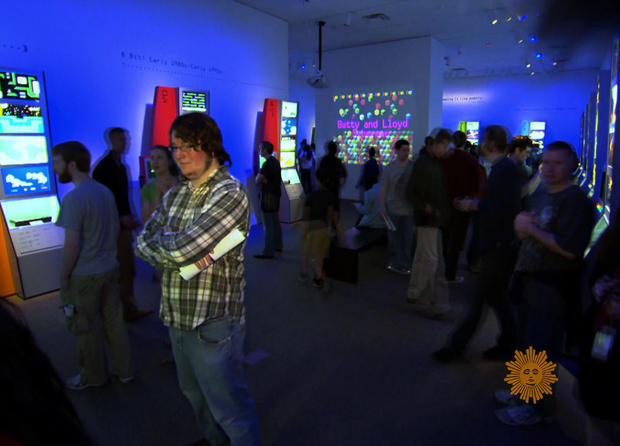The art of video games
(CBS News) Video games like Space Invaders used to be confined to small screens at home and in video arcades. Not anymore, as of this past Friday. Rita Braver has the story:
They poured in the second the display opened - a celebration of video games through the years. And they definitely came to play.
But where they're playing is what's unexpected: the Smithsonian American Art Museum.
"You could say video games are a great grassroots expression of culture and in some cases art in our democracy," said museum director Betsy Broun. "I guess what surprised me was just the sort of joyful excitement in the games."
Broun said the video game exhibit - the first ever at a major American museum - has caused so much excitement it will travel to 10 other cities, illustrating a growing understanding of the public fascination with games.
"One time a single game was offered for sale and sold six million copies in one day; you know. that's more people than go to the Met in a year," Broun said. "So when you begin to understand how pervasive it is, I guess the bigger question is, why did we wait so long?"
Indeed, when you look at some of the images from games, they can resemble moving paintings, from abstract to figurative to landscapes.
There's one reminiscent of Japanese woodcuts, and another that's been compared to an M.C. Escher work. But fans say it's not just how video games look that makes them works of art; it's also how they engage the imagination and stimulate players to think about what moves to make.
"Because they can help us find connections with deeper questions that we may have inside of ourselves," said long-time game developer Chris Melissinos, who curated the show. "You're presented with a series of obstacles, and so it's how you quickly make those choices that discern the best outcome for anybody playing."
The exhibit begins with 1970s and '80s action adventure games like Pitfall, Combat, Space Invaders. And surely you remember Pac-Man from 1981, in which a yellow dot tries to evade or be eaten by ghosts. It was an international sensation.
"I'm a fan of this game," said museum-goer Rita, "but I'll tell you something: When I was playing it I never thought that I was engaged in art!"
But Melissinos says the artistry was in Pac-Man's becoming one of the first games to appeal to women, who now represent 40 percent of gamers.
Released just a few years later, in 1985, Super Mario Brothers introduced a much more complex world, and a video hero, as players manipulated Mario to find and rescue a princess.
"There were many studies that showed that he was more popular as a character in the minds of young Americans than even Santa Claus," said Melissinos.
The Super Mario series evolved over the years, with more complex graphics and scenarios. And because technology is such an important factor in games, the exhibit showcases some of the playing devices used during four decades.
But along with better technology comes better ways to do battle, which has sometimes led to controversy.
When asked about criticism of violence in video games, museum director Betsy Broun replied, "Art reflects life. I think we live in a world where not including some of that would be unrealistic. But I really think you'll find in the games that there is oftentimes a deeper message."
In fact, games like 2010's Heavy Rain," which explores the boundaries of parental love, do aim to touch our emotions.
And if there's one thing this exhibit illustrates, it's that for video game creators the journey is just beginning:
"We're able to create worlds and environments that just don't exist in the real world," said Melissinos. "So we're able to open our imagination, and it's boundless, it's limitless. And that is definitely part of the attraction."
For more info:
- "The Art of Video Games" at Smithsonian American Art Museum, March 16-Sept. 30, 2012; Confirmed cities on the exhibition tour include Boca Raton, Fla.; Seattle; Yonkers, N.Y.; Toledo, Ohio; Flint, Mich.; Memphis, Tenn.; and Miami, Fla.
- "The Art of Video Games: From Pac-Man to Mass Effect" by Chris Melissinos and Patrick O'Rourke (Welcome Books)


